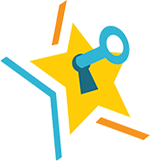There was a noticeable shift in the women’s class at Franklin County Sheriff’s Office (FCSO) in Massachusetts. Students began using more appreciative language when talking about themselves and each other. They employed the skills of “listening well,” “being aware of one’s own biases,” “respecting differences,” and “thinking and communicating with clarity and precision.” These students were practicing skills identified by FCSO staff in a chart of Skills, Knowledge, and Attributes (SKAs) to guide instruction across the corrections education program. Inspired by the nine Teaching Skills That Matter skills, the SKA chart includes definitions and examples that make it easy for students to understand and recognize those skills and how they look inside and outside of the classroom.

Throughout the course, instructor Shelley O’Dowd combined skill awareness with activities designed to meet the College and Career Readiness Standards (CCRS). Initially, students completed an SKA self-assessment to understand the terms and recognize their own strengths and areas for growth. In class, students discussed character development, using the SKA chart to guide them.
While reading The Secret Life of Bees for an English Language Arts unit, for instance, students reflected on the Skills, Knowledge, and Attributes that surface in the text. As they identified with and explored characters in the novel, they began to see how the characters were demonstrating (or not demonstrating) the skills. Simultaneously, they recognized how they were using and developing the skills themselves, inside and outside of the classroom. They reflected on all those skills in a daily reflection exit ticket activity.
Students noted that communication skills, the ability to navigate systems, and critical thinking were the skills most relevant to their everyday life inside and outside of the classroom. Upon observing this, Shelley highlighted these skills, defined them, and posted the terms and definitions around the classroom as ongoing reminders.
While Shelley has always talked about “employability skills” in her classes, this was the first time that she explicitly built the skills into her lesson plans. The impact this has had on students’ self-awareness made Shelley realize how essential these skills are to personal self-development and self-awareness, skills that “prepare learners to go the world” and be a better person in any context, not just work.
